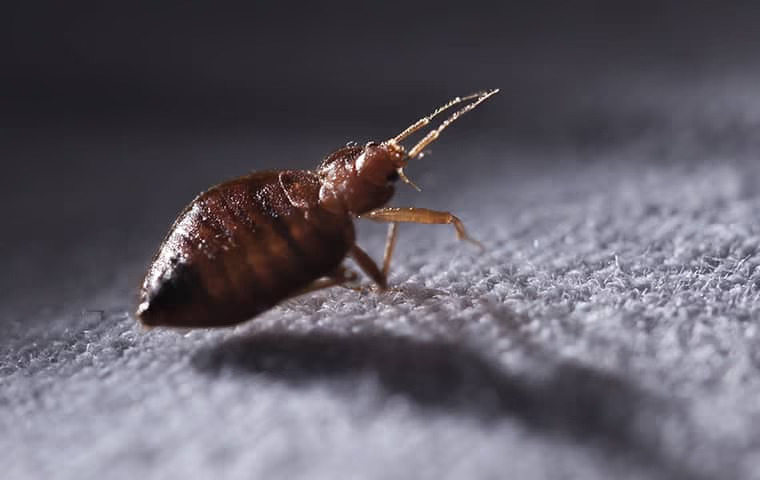King-size Bed Pest Pest Control Expert Cincinnati: Pro Bug Solutions
King-size Bed Pest Pest Control Expert Cincinnati: Pro Bug Solutions
Blog Article
Sorts Of Insect Control: Which Approach Is Right for Your Problem?
When faced with a pest invasion, the option of an appropriate approach for parasite control is crucial in properly managing the circumstance. From chemical therapies to biological solutions, there exists a variety of techniques that can be utilized to deal with various sorts of parasites. Each method features its very own set of benefits and considerations, making the decision-making procedure a nuanced one. Recognizing the subtleties of each technique and evaluating their compatibility with the particular insect invasion handy is crucial for accomplishing long-term success in pest monitoring. By checking out the various sorts of pest control methods available, people can make educated decisions customized to their one-of-a-kind conditions, making certain a more efficient and lasting result in insect elimination.
Chemical Parasite Control
Chemical insect control involves the usage of artificial or naturally derived chemicals to take care of and get rid of pest populaces efficiently. This approach is commonly used in agriculture, forestry, and residential settings to deal with a wide variety of insects, including rats, weeds, and insects. Making use of chemical pesticides can provide fast and targeted services to pest problems, making it a prominent option for numerous individuals and services.
One of the essential benefits of chemical insect control is its ability to swiftly remove pests, decreasing the danger of damage to crops, property, and human wellness. By making use of specific chemicals that target particular parasites, this technique can properly manage infestations while reducing damage to advantageous organisms and the atmosphere when applied correctly.
Nonetheless, using chemical parasite control likewise increases concerns concerning possible unfavorable effects on non-target species, water resources, and human wellness. It is critical to follow security guidelines, apply chemicals sensibly, and consider alternative bug control techniques to minimize these risks and make sure sustainable pest management methods.
Organic Parasite Control
Organic bug control, likewise recognized as biocontrol, makes use of living organisms to handle and lower pest populations naturally. By utilizing the parasite's all-natural killers or virus, organic bug control offers a ecologically friendly and lasting option to pest administration.

Mechanical Parasite Control
Making use of manual and physical approaches to handle insect populations, mechanical parasite control uses an alternate technique that does not rely on making use of living organisms or synthetic chemicals. This approach entails using obstacles, catches, or other gadgets to physically deter or eliminate bugs. By blocking parasite entry factors or setting up traps to catch them, mechanical pest control can successfully decrease invasions without introducing chemicals right into the setting.
One common example of mechanical pest control is using mesh displays on doors and windows to protect against bugs from going into structures. This straightforward yet efficient approach works as a physical barrier, keeping pests out while permitting appropriate air flow. In addition, devices like mousetraps, fly swatters, and ultrasonic repellents fall under the mechanical parasite control classification.
While mechanical insect control methods can be labor-intensive and need routine tracking and upkeep, they use a lasting and eco-friendly solution for handling pest invasions. By combining various mechanical techniques, homeowner can produce a detailed pest control approach that reduces dependence on chemical pesticides.
Physical Insect Control

Some typical physical parasite control methods include using obstacles such as internet or displays to avoid bug entrance, look these up catches to record and eliminate parasites, and hand-picking to physically remove parasites from plants or frameworks. Furthermore, strategies like warm therapies can be used to control bugs like bed insects by raising the temperature to levels that are deadly to the bugs.
Physical pest control is especially valuable in integrated insect monitoring (IPM) methods, where several pest control methods are integrated for effective parasite management while reducing the usage of chemicals. By making use of physical parasite control methods, people can effectively address insect problems with minimal ecological impact.
Integrated Insect Administration
When executing physical insect control techniques as part of parasite monitoring techniques, Integrated Insect Management (IPM) becomes a detailed technique that leverages different methods to effectively regulate pest populations. IPM concentrates on long-lasting prevention of bugs via a mix of organic, cultural, physical, and chemical devices tailored to certain parasite issues. By incorporating several control tactics, IPM intends to minimize the dangers related to parasites while also minimizing reliance on chemical services.
One trick aspect of IPM is the emphasis on monitoring and assessing pest populaces to identify the most suitable control techniques. This aggressive technique enables early intervention and targeted techniques, leading to extra reliable parasite administration. In addition, IPM advertises eco-friendly methods by prioritizing non-chemical control methods and only using pesticides as a last hope.
Conclusion

By making use of the bug's natural killers or microorganisms, organic bug control supplies a lasting and environmentally pleasant option to pest administration. - Kings Bed bug exterminator Cincinnati
Making use of physical click to read more and manual approaches to handle parasite populations, mechanical insect control offers an alternate strategy that does not count on the usage of living microorganisms or synthetic chemicals.An efficient strategy to taking care of bug populations without depending on chemical or organic methods involves the use of physical bug control strategies.When executing physical bug control methods as component of pest monitoring approaches, Integrated Pest Monitoring (IPM) emerges as a detailed technique that leverages numerous methods to properly regulate pest populations. Chemical parasite control entails the use of pesticides, biological insect control uses all-natural predators, mechanical insect control entails physical barriers, physical parasite control consists of capturing or eliminating bugs, and incorporated insect management integrates numerous techniques for a holistic top article approach to pest control.
Report this page